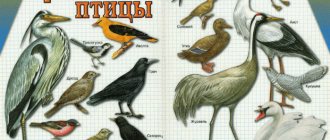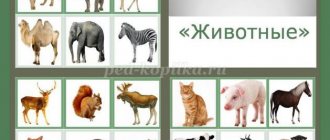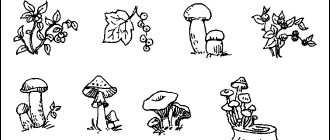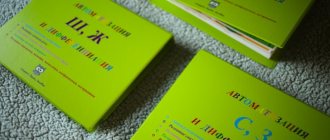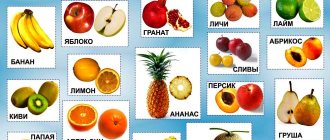Homework for parents of children 4-5 years old with ODD
Lexical topic “Summer. Summer changes in nature." Sound[s].
1. Color the picture (an adult colors it)
2. What time of year is this? Why do you think so? (It has become warm. The sun is shining and warming. The trees and bushes are green.
There are many flowers in the forest and meadow).
3. Listen to the story:
Summer has come, it has become hot. The water in the river is warm. Petya and Kolya are riding a boat. Dima and Mitya are swimming. Tima and Katya are playing ball. Lena and Masha are sunbathing. Vika and Tolya are picking strawberries. How nice it is in summer!
4.Answer the questions:
What happened? How is it outside? What is the water like in the river? What are Petya and Kolya doing? Show them.
What are Dima and Mitya doing? Show them. What are Tima and Katya doing? Show Tim, Katya.
What are Lena and Masha doing? Show them. What are Vika and Tolya doing? Show it to Vik, Tolya.
5.Retell the story. (If the child could not retell the story, then read it again. Invite the child to retell it again.)
6. Invite your child to guess the riddle.
The grove smells of strawberries, the sun burns your cheeks. Guess and tell me: when does this all happen? (In summer)
7. Strengthen the articulation of the sound [s].
8. Play the game “Catch the Word.” The adult names different words, the child claps out only words with the sound [s]: mask, milk, pussy, swallow, sleep, mouse, nose, wheel, boots, bench, aquarium, scales, basket, vacuum cleaner, goat, pineapple, soda, car, mustache, rose, wasps, astronaut.
9. Pronounce the phrase with the sound [s] behind an adult several times clearly, calmly, expressively (loudly, quietly, in a whisper):
At night it is quiet in the old house, only a mouse rustles in the straw.
Generalization on the lexical topic “Autumn”. Sounds [a], [u], [i].
1. Color the picture (an adult colors it)
2. Fix the season with your child - autumn
and ask him to say this word several times.
Fix in your speech the answer to the question: what time of year is it now? (It’s autumn now.)
Train your child in pronouncing this phrase. Reinforce the signs of autumn.
it has become cold
outside
it rains
often on the trees
have turned red or yellow,
they
are falling, there are fewer butterflies and beetles, birds are flying away,
from gardens and orchards
.
Say these phrases with your child and ask him to independently talk about autumn.
3.Look at the picture “Autumn” with your child. Explain to him why autumn is drawn in the picture. Draw his attention to the gloomy sky, dark clouds, light rain, colorful leaves
in the trees,
birds flying away, children's clothes.
Ask your child to tell about autumn based on the picture. If he is at a loss, help him by asking questions:
• What time of year is it in the picture? (It's autumn.)
• What kind of sky? (The sky is gloomy.)
• What kind of clouds? (The clouds are dark.)
• How much rain is it coming? (It's raining lightly.)
• What kind of leaves are on the trees? (The trees have colorful leaves.)
• What do birds do? (The birds fly away.)
• How are the children dressed? Why? (It’s cold outside. The children are dressed warmly.)
4. Exercise for fingers “Autumn Leaves”.
Accompany speech with finger movements.
One, two, three, four, five, let's collect leaves. (Rhythmically clench and unclench your fists.)
Birch leaves, rowan leaves,
(Fold your fingers, starting with the thumb, on both hands).
we will collect poplar leaves, aspen leaves, oak leaves,
We'll take an autumn bouquet to mom. (“Walk” on the table with the middle and index fingers of both hands).
5. Strengthen the articulation of the sounds [a], [u], [i]. Play the game “Name the first sound.” The adult names different words, the child names the first vowel sound in the word: stork, duck, willow, turkey, dill, alphabet, aquarium, hut, iron, street, toys, turkey, pharmacy, address, car, ears, Ira, snail.
Generalization on the lexical topic “Winter”. Sounds [a], [u], [i], [o].
1. Color the picture (an adult colors it)
2. Talk to your child about the season - winter. Fix the signs of winter: in winter the ground is covered with snow, the rivers are covered with ice, there are severe frosts, snowfalls, blizzards, people dress warmly, children ski and sled.
Fix the answer to the question: what time of year is it now?
(It’s winter now.)
1. Look at the picture “Winter” with your child. Ask your child questions and help him answer them with complete answers, giving a sample if necessary:
What time of year is it in the picture? (The picture shows winter.)
Why do you think so?
(There is snow on the ground. Snowflakes are spinning in the air. Bullfinches are sitting on a tree.)
How are the children dressed?
Why? (The children are dressed warmly. It’s cold outside.)
What are the children doing?
(Children are making a snowman.)
3. During a walk, talk with your child about winter, and together with him name the signs of winter (they are highlighted in the second paragraph). Consider how different snowflakes are. Show your child and help him remember: snow is white, fluffy, cold, soft; ice is hard, smooth, shiny.
Say these phrases several times.
4. Help your child write a story about winter using questions: What time of year is it? (Winter came.)
What lies around?
(There is snow all around.)
What's on the river?
(Ice on the river).
What's on the street?
Why is it cold? (It’s frosty outside.)
What’s everything like around you?
(Everything around is white.)
What are the children doing?
(Children sledding...)
Repeat the story yourself: “Winter has come. There is snow all around. Ice on the river. It's frosty outside. Everything around is white. Children are sledding".
Then the child speaks.
5. Train your child in pronouncing words: snowdrift, snowflake, icicle, snowfall, flakes.
6. Read the poem to your child and try to learn it:
I'll sprinkle sand thickly all over the path at the gate,
and also steps, descents, because there is ice.
(V. Nishchev)
7. Exercise for fingers “Walk”. Accompany speech with finger movements.
One, two, three, four, five, (Bend fingers one at a time)
We came to the yard for a walk. (“Walk” along the table with the index and middle fingers)
They sculpted a snow woman (“They sculpt” a lump with two palms)
The birds were fed crumbs (crushing movements with all fingers)
Then we rode down the hill, (Run the index finger of the right hand along the palm of the left hand)
And they were also lying in the snow. (Place palms on the table, first one side, then the other)
Everyone came home covered in snow. (Dust off palms)
We ate soup and went to bed. (Movement with an imaginary spoon; hands under cheek)
5. Strengthen the articulation of sounds [a], [u], [i], [o]. Play the game “Name the first sound.” The adult names different words, the child names the first vowel sound in the word: stork, duck, willow, cloud, etc.
Generalization on the lexical topic “Spring”. Sounds [a], [u], [i] [o], [s].
1. Color the picture (an adult colors it)
2. Talk with your child about the time of year that has come. Say the word spring with your child ,
teach how to answer the question: what time of year is it now?
(It’s spring now.)
Draw the child’s attention to the fact that in spring
the snow melts, thawed patches appear, ice begins to drift, birds fly in, the sun warms up, and streams run.
Practice the pronunciation of these phrases with your child. Remember that your speech should be a model for him. Insist that he tries to speak as clearly as possible.
3. Look at the picture with your child on the topic “Early Spring”. Help him write a story based on the picture using several sentences. Spring has come. The sun is shining brightly. Snow is melting. Streams are flowing. Children launch boats.
If your child finds it difficult, first help him answer the following questions:
• What time of year is it in the picture? (The picture shows spring.)
• What does the sun do? (The sun is shining brightly.)
• What does snow do? (Snow is melting.)
• What do streams do? (Streams are running.)
• What are the children doing? (Children launch boats.)
3.Read your child a poem about spring. Offer to play the game “Give me a word.”
There is a flock of cheerful birds outside the window, making so much noise that there is no time for sleep.
(spring) has come to us again
(V. Nishchev)
5. “Answer correctly.” Development of auditory attention.
In spring, is the sun warm or cold?
Home speech therapy assignment for the senior group, on the lexical topic: “Vegetable garden.” Vegetables" -
GARDEN. VEGETABLES.
Parents are recommended:
· consider natural vegetables at home with your child: potatoes,
cucumber, carrots, cabbage, beans, beets, pumpkin, radishes, peas, onions, peppers;
· pay attention to the following signs of vegetables: color, shape, taste;
· if possible, tell and show the child where and how vegetables grow, what they are prepared from (soup, salad, vinaigrette...).
Expanding children's vocabulary:
Titles:
cucumber, tomato (tomato, potato, beet, carrot, onion, turnip, cabbage, radish, pepper, garlic, eggplant, zucchini, squash, greens, parsley, dill, radish, pumpkin, beans, beans, peas, pod, tops, roots, fruits, seeds, tubers, leaves, cabbage, lettuce, beetroot, vinaigrette, juice, bag, box, fertilizer, pests, harvest, vegetable garden, bed, soil, planting, watering, weeding.
Signs:
red, green, yellow, ripe, unripe, tasty, tasteless, sweet, sour, bitter, salty, raw, pickled, canned, boiled, healthy, round, oval, elongated, oblong, smooth, ripe, fragrant, aromatic, juicy, vegetable.
Actions:
plant, care, grow, sow, loosen, ripen, water, ripen, collect, sprinkle, pull out, dig, cut, wash, grate, cook, stew, fry, eat, crunch, prepare, salt, ferment, can, pickle, dry.
1.
“ Harvest .
The child must be able to explain why it is this way and not otherwise.
Carrots, beets, turnips, radishes are pulled out;
Cucumbers, tomatoes, zucchini, peas - pick;
Cabbage - cut;
Potatoes are dug up.
2. “Call it affectionately”
(formation of nouns in diminutive form).
cucumber - cucumber
tomato ‒
tomato
pepper‒
pepper
onion‒ onion
peas‒
peas
carrots‒
carrots
3. “What did we eat?”
(formation of a noun in the plural of the instrumental case)
Tomatoes - we are full of tomatoes Cucumbers - we are full of cucumbers
Peppers - we are full of peppers Eggplants - we are full of eggplants
Beans - we're full of beans Zucchini - we're full of zucchini
4. “Tell me which one? Which?" (selection of homogeneous adjectives for nouns)
What kind of pumpkin? –
orange, round, sweet, large, fragrant,...
tomato ?
‒
round, soft, juicy, sweet and sour, vitamin-rich,...
What vegetables
‒
healthy, tasty, juicy, ripe, colorful,...
5. “There is - there is no”
(genitive singular)
eggplant - there is no eggplant
potatoes -
no potatoes
onions -
no onions
parsley - no parsley
vegetable garden -
no vegetable garden
land -
no soil
bed - no bed
root -
no root
stem -
no stem
6. “What shall we prepare”
(formation of relative adjectives from nouns)
From potatoes - mashed
potatoes
From pumpkin -
pumpkin porridge
From cucumbers -
cucumber salad
From tomatoes -
salad, tomato juice
From carrots - carrot juice
From peas –
pea soup
From squash – squash caviar
From garlic -
garlic sauce
7. Retelling the story using leading questions. WHO IS DRESSED HOW?
The days have become stormy, the nights are getting colder. They began to harvest vegetables from the gardens so that they would not spoil or freeze. First, the bare cucumbers were removed. Then onions in paper shirts. Then beans in woolen stockings. We removed turnips, rutabaga, radishes, carrots, beets and various parsley. One cabbage left. It is removed later than everyone else. She, the cabbage, has seventy clothes, she is not afraid of the cold!
1.
When are vegetables harvested?
2.
What vegetables were harvested from the gardens?
3.
What's left in the garden?
4.
Cabbage has seventy clothes.
Why do they say this? 5.
(The child must remember the riddle about cabbage).
Speech therapy games on lexical topics
"ONE IS MANY"
Objectives: formation of plural nouns in the nominative and genitive cases.
For example: no horse, many cows, no pig, many goats, etc.
"BIG SMALL"
Objectives: continue to learn how to form nouns using diminutive and augmentative suffixes.
For example: cat - cat - cat, dog - dog - dog, etc.
"HUGE"
Tasks: formation of nouns with the augmentative suffix -ISCH
For example: cat - cat, cow - cow
"WHO IS BIGGER?"
Tasks: formation of related words
For example: cat - cat - kitten - kitty - cat - kitty - kitty, etc.
“NAME THE MOTHER AND THE BABIES”
Tasks: forming nouns from nouns
For example: crows have crows, owls have owls.
"NAME YOUR FAMILY"
Tasks: forming nouns from nouns
For example: dad is a cat, mom is a cat, children are kittens. This is a cat family.
"A LOT OF"
Objectives: consolidation of nouns in the active dictionary
For example: many cows - a herd, many horses - a herd, many dogs - a pack.
"WHAT IS HE DOING? WHAT ARE THEY DOING?
Tasks: Use singular and plural verbs of the 3rd person present tense.
For example: pecks - they peck, flies - they fly, waves - they wave, etc.
“WHO DOES THIS?”
Objectives: learn to select verbs for a given noun. Select actions for the subject.
For example: she catches mice, purrs, meows, laps - this is a cat.
“WHO IS SCREAMING?”
Tasks: Formation of verbs from onomatopoeia.
For example: a cow moos, a sheep bleats, a goat bleats, etc.
"TELL WHICH"
Objectives: Coordination of adjectives with masculine and feminine nouns, singular and plural, in the nominative case, learning to select adjectives for a given noun
For example: long tail, sharp horns, mustachioed muzzle.
"TELL WHICH"
Objectives: learn to select adjectives for a given noun.
For example: she is horned, big, motley - a cow. He is tall, fast, handsome - a horse, etc.
"WHOSE?"
Tasks: forming possessive adjectives from nouns.
For example: goat fluff, cow's milk, dog's face, etc.
"SAY THE OPPOSITE"
Tasks: compiling complex sentences with the conjunction [a] according to the model. Mastering antonym words.
For example: a horse has a long tail, and a pig…(short), etc. The cat is short, and the horse...(high), etc.
“WHAT PAIL?”
Tasks: Formation of adjectives with a diminutive suffix.
For example: soft, fluffy
“SAY IN ONE WORD, WHAT?”
Tasks: Formation of complex adjectives by merging the stems of two nouns.
For example: a horse has a long mane, it is long-maned; A goat has long hair and is long-haired.
“WHERE, WHERE, WHERE?”
Tasks: use of prepositions ON, IN, IZ, S(SO), UNDER, FOR, etc.
For example: a kitten hid on the floor of the bed, on a shelf, in a box, behind a chair, crawled out from under the bed, from under a chair, out of a box, jumped off the table, etc.
"WHO LIVES WHERE?"
Tasks: Use of prepositional constructions in speech, practical use of the preposition “B” in speech.
For example: a dog lives in a kennel, a cow lives in a barn, a cat lives in a house, etc.
"FUNNY SCORE"
Objectives: learn to coordinate numerals with nouns
For example: a cat has two kittens, a goat has three kids, a sheep has five lambs, etc.
